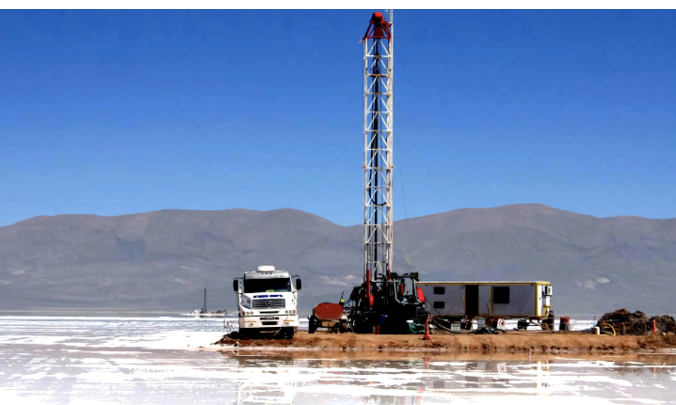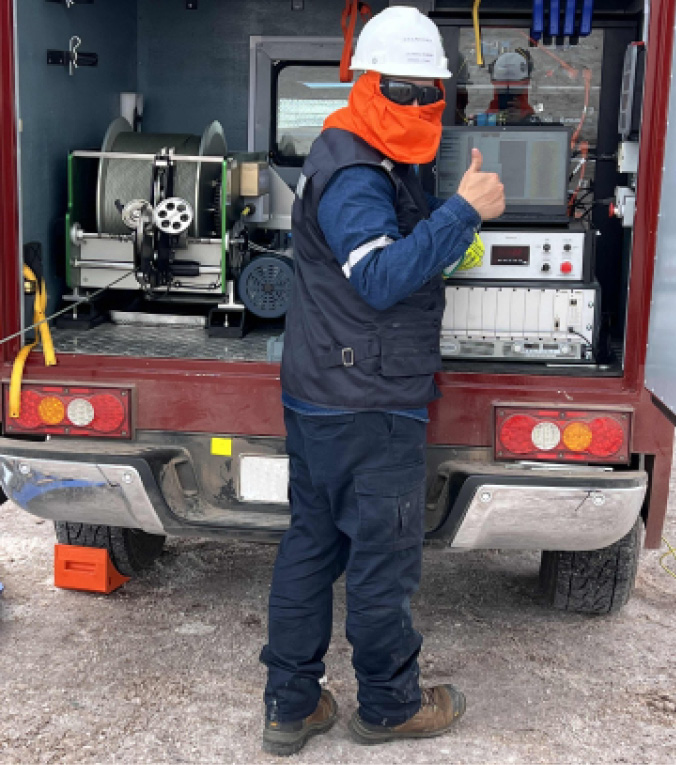How can older lithium mines help America achieve its alternative energy independence?
By Gene Morgan

The two big challenges facing lithium mining in the U.S. today are public perception and scaling up, and the first thing the U.S. industry needs to solve is public perception.
Perception is at the heart of the current mine permitting reform debate in the U.S. There is a need to shift the public and regulator mindset to support the permitting of new mines rather than opposing them. If this is not done, the share of U.S. lithium production (as a proportion of the expected global demand of 3.7 mtpa in 2030) will be minimal indeed.
This will be bad for the nation’s critical mineral independence which, in turn, has more profound flow-on impacts on global stability. Additionally, America cannot rely on the productivity of existing lithium mines alone.
One key question being asked of established and older lithium brine mines is what they are doing to improve freshwater use and ensure scaling up production will not negatively impact surface and groundwater resources – a fair concern, but one that is unfortunately also easy to over-politicize.
This debate for the future of the American lithium industry hinges on the example set by existing mines across the country to modernize and limit environmental impact. It is critically important that the early work in the lithium expansion of the U.S. is well managed, as there will be flow-on implications to the rest of the potential supply from the domestic market. Get it right, and the U.S. could well achieve lithium independence; get it wrong, and dependence on foreign supply could be a virtual certainty.
Intensity of CO2 is also an area in which lithium miners are under increasing scrutiny, especially older mines. This is especially true for projects using carbon-intense power like coal or natural gas and high-energy intense technologies in the lithium mining, extraction and chemical conversion operations. Again, this is a fair thing to be watchful of, but also one that is far more likely to be well managed inside the U.S. rather than in foreign jurisdictions.
These concerns allude to a bigger question being asked by buyers of lithium chemicals and the end users: electric vehicle buyers. Namely: will this transition be for the good of our planet? Prove that lithium-based batteries are better than the incumbent mobility and energy technologies.
Two tangible ways exist to combat the risk of an error in early U.S. lithium supply expansion; first, embracing modern technologies is key. Older, more outdated methods currently used by some older mines should be eschewed.
Second, the lithium industry must share new knowledge across projects. With so much parallel lithium development, avoiding “knowledge silos” is essential as it will help prevent mistakes.
Miners are naturally looking to protect their intellectual property, and while “core IP” is involved in many lithium extraction projects, there are also trade secrets that shouldn’t really be secret. When mine development IP is non-core, these new learnings and discoveries between projects should be openly shared, because again, getting it wrong in one U.S. project could impact the whole of the nation’s industry.
Beyond the aforementioned significant public and regulatory perception, a second major challenge is the sheer scale-up size of new supply sources.
Global demand for lithium will grow by 42 times by 2040. A vast challenge indeed.
The updating and modernizing of aging mines in America will play an initial pivotal role in achieving the nation’s goal of energy independence. Existing American lithium mines reference a handful of current mines producing lithium from brine or hard rock or making other chemical products such as potash or bromine and could now pivot into producing lithium.
These existing mines are just the tip for the U.S. to become lithium independent.

The next challenge is finding and developing new sources of supply. And although this challenge is vast, there are early signs of hope for the U.S. to become a more significant lithium producer in the decades to come. Again, however, new technology will be required, and fortunately, the current high lithium prices are a catalyst for developing this technology.
For example, enhancing the lithium resource assessment through advanced geophysical technologies allows a better understanding of the subsurface and helps optimize the mining process. New deposits will be found; that is a certainty. Proven oil and gas and mining techniques have been made bespoke for lithium, and with excellent results.
Direct lithium extraction, or DLE, is a modernizing technology that some companies use to expand or convert existing brownfield brine projects to produce lithium. DLE could address the challenge of scaling up production and public perception if done well. It will also result in a direct impact on the modernization of aging American lithium mines.
A hard-to-ignore feature of mining, in general, is the visible surface disruption it creates, and nowhere is this more a feature than with brownfield brine projects using large evaporation pond systems to concentrate brine. Minimizing the visible footprint using DLE over evaporation ponds is a compelling improvement and a core component of lithium mining modernization. On the contrary, continuing to expand the visible footprint with ever-larger evaporation pond systems will likely face local resistance in the U.S.
Technology brings vast opportunities to improve return on investment and improve sustainability. The U.S., a natural source of technology and capital advantage, is well-placed to innovate in the lithium mining sector.

The good news is that the industry recognizes the need for sustainable practices and better data. Lithium companies are gathering around standards such as the Initiative for Responsible Mining Assurance (IRMA) for best practices on reducing social and environmental impact. For lithium brine operations, monitoring brine and freshwater levels is critical to verify that brine pumping is not adversely affecting the water systems. A step change improvement in understanding the subsurface will be needed to modernize brownfield projects nationwide.
With the downturn in “easy money” in many other sectors, the lithium industry is now competing well for talent. Lack of talent directly impacts the ability of older mines to modernize.
Lithium has an advantage in so much that it is considered an important industry that plays an outsized role in providing an essential raw material for the energy transition the world needs. This greater calling appeals to individuals passionate about positively impacting the planet.
The industry needs this talent to advance. It requires a diverse skill set spanning various disciplines such as engineering, geoscience, data science, automation and environmental management.
Getting top talent to want to stake a career in the lithium industry will require the public to embrace the idea that mining is critical to future-proofing the nation’s energy independence as the industry pushes at the frontier of advanced technology and social responsibility.
The lithium industry in the U.S. has one shot to get it right. It must start with the modernization of its current lithium mines. The time is now.
About the author: Gene Morgan is the founder and CEO of brinefield services group Zelandez.
